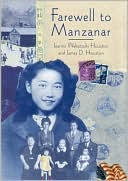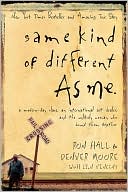Farewell to Manzanar: A True Story of Japanese American Experience During and After the World War II Internment
Search in google:
During World War II a community called Manzanar was hastily created in the high mountain desert country of California, east of the Sierras. Its purpose was to house thousands of Japanese American internees. One of the first families to arrive was the Wakatsukis, who were ordered to leave their fishing business in Long Beach and take with them only the belongings they could carry. For Jeanne Wakatsuki, a seven-year-old child, Manzanar became a way of life in which she struggled and adapted, observed and grew. For her father it was essentially the end of his life.At age thirty-seven, Jeanne Wakatsuki Houston recalls life at Manzanar through the eyes of the child she was. She tells of her fear, confusion, and bewilderment as well as the dignity and great resourcefulness of people in oppressive and demeaning circumstances. Written with her husband, Jeanne delivers a powerful first-person account that reveals her search for the meaning of Manzanar.Farewell to Manzanar has become a staple of curriculum in schools and on campuses across the country. Last year the San Francisco Chronicle named it one of the twentieth century’s 100 best nonfiction books from west of the Rockies. Meredith Kiger - Children's Literature In this timely reissue of a 1973 edition, Ms. Houston recalls her childhood experience of being interred with her family at Manzanar, a Japanese internment camp. Ms. Houston's parents and extended family were Issei, the Japanese word for first generation Japanese-Americans. Many Issei had settled in the coastal areas of California, just as her parents did. They prospered there, only to have it all taken away after the attack on Pearl Harbor. Suddenly, all Japanese were suspect, and a presidential order demanded that they all be removed from their homes and sent to hastily prepared camps. Jeanne, her mother, father, brothers and sister were sent to Manzanar, a camp near the high Sierra Mountains in California. 23 short chapters recall what her family had to endure both physically and emotionally. Only 9 years old at the time, Jeanne witnessed what this social and cultural disruption did to her family, especially to her father. A patriarch in the true sense of the word, he suffered immeasurably from the humiliation of losing his status as head of the family. Jeanne's descriptions of camp life relate the good and the bad of communal living. Once envisioned as a memoir for her extended family, this story has been reissued in the hopes that the more recent tragedy of 9/11 would not result in the same fears and misjudgments that a similar event like Pearl Harbor precipitated. Seeing the events through the recollections of a young child makes for perfect reading as parents or teachers seek ways to assist young people find appropriate avenues to allay fears and anxieties and to foster understanding of other cultures. 2002 (orig. 1973), Houghton Mifflin,
ForewordixA ChronologyxiiiTerms Used in This BookxvPart 11"What Is Pearl Harbor?"32Shikata Ga Nai93A Different Kind of Sand214A Common Master Plan255Almost a Family316Whatever He Did Had Flourish427Fort Lincoln: An Interview548Inu599The Mess Hall Bells6510The Reservoir Shack: An Aside7011Yes Yes No No73Part 212Manzanar, U.S.A.8513Outings, Explorations9314In the Firebreak10515Departures10916Free to Go11317It's All Starting Over12018Ka-ke, Near Hiroshima: April 194612819Re-entry13420A Double Impulse14121The Girl of My Dreams152Part 322Ten Thousand Voices167Afterword185








